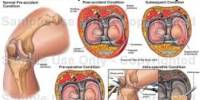Food rheology is the study of the rheological properties of food, that is, the consistency and flow of food under tightly specified conditions. Understanding how food products respond to applied forces such as shear, compression, or extension is required. The consistency, degree of fluidity, and other mechanical properties of food are important in understanding how long it can be stored, how stable it will remain, and determining food texture. Rheological properties influence the texture, stability, and sensory perception of various food products.
Food texture, such as how spreadable and creamy a food product is, is often used to determine consumer acceptability. Food rheology is important in quality control during food manufacture and processing. Food rheology terms have been recorded since ancient times. Bakers in ancient Egypt determined the consistency of the dough by rolling it in their hands.
Here are some key concepts and parameters related to food rheology:
- Viscosity: The viscosity of a fluid or semi-solid material refers to its resistance to flow. It is an important rheological property that influences the consistency and mouthfeel of foods. High-viscosity foods are thick and resistant to flow, whereas low-viscosity foods are thin and more fluid-like.
- Shear Stress and Shear Rate: Shear stress is defined as the force applied parallel to a surface divided by the area it acts on. The rate at which adjacent layers of a food material slide past each other is referred to as shear rate. Shear stress and shear rate are important parameters for describing flow behavior and viscosity in foods.
- Flow Types: Food materials can exhibit different flow behaviors, depending on their rheological properties. There are several flow types commonly observed in food rheology, including Newtonian flow (constant viscosity regardless of shear rate), pseudoplastic flow (viscosity decreases with increasing shear rate), and dilatant flow (viscosity increases with increasing shear rate).
- Yield Stress: In a viscoelastic material, yield stress is the minimum stress required to initiate flow. It denotes the point at which a material changes from a solid-like to a fluid-like behavior. Understanding the stability and flow properties of many food products, such as sauces, dressings, and gels, requires an understanding of yield stress.
- Viscoelasticity: Many food materials have viscous (flowing) and elastic (rebounding) properties. This combination is referred to as viscoelasticity. During deformation, viscoelastic materials can store and release energy, and their rheological properties are affected by both time and temperature. Dough, cheese, and mayonnaise are all viscoelastic foods.
Food rheology is a multidisciplinary field involving knowledge from physics, engineering, and materials science, among other disciplines. Its applications in the food industry range from product development to quality control, process optimization, and understanding consumer preferences. Manufacturers can create desirable textures and improve the overall sensory experience of their products by studying and manipulating the rheological properties of foods.
















